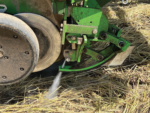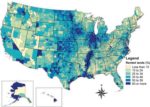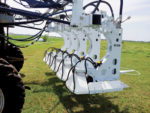Advertise Follow Us
Articles by Dan Crummett
Ahead of the Curve
Industrial Water-Jet Technology Improves No-Till Planting
Susterre Technologies will be taking orders in 2023 for a retrofit ultra-high-pressure water-jet system that can no-till in nearly all conditions.
Read More
[Podcast] Ahead of the Curve: High-Pressure Water Jet Planters with Susterre’s Michael Cully
For this episode of the No-Till Farmer podcast, brought to you by Yetter Farm Equipment, contributing editor Dan Crummett talks with Cully about Susterre’s system and what it means for the future of no-till.
Read More
[Video] Ahead of the Curve: High-Pressure Water Jet Planters with Susterre’s Michael Cully
For this episode of the No-Till Farmer podcast, brought to you by Yetter Farm Equipment, contributing editor Dan Crummett talks with Cully about Susterre’s system and what it means for the future of no-till.
Read More
Ahead of the Curve
AI Powers Latest Smart Sprayer Innovations
The entry of artificial intelligence into agriculture forever changed farm practices.
Read More
No-Tillers, Landowners Must Work Together to Advance Soil Stewardship
Landowner buy-in is critical to boosting the adoption of no-till and other conservation measures on rented farmland.
Read More
Ahead of the Curve
Mechanical Weed-Control System Slashes Herbicide-Resistant Weeds
Row Shaver System mows down weeds growing among row crops, combatting weed pressure without losing soil moisture.
Read More
Ahead of the Curve
Electro Shock Therapy for Weeds Shows Promise as Herbicide Alternative
Technology using electric currents to destroy weeds gains traction overseas as countries look for less toxic, less resistant ways to control weeds.
Read More
Confound Pests with Compound Rotations
Longtime no-till educator and practitioner Dwayne Beck urges growers to adopt a diverse mix of rotational crops to fight pests, reduce inputs and boost profits.
Read More
Ahead of the Curve
On-the-Go Weed Control
Driven by increasing occurrences of herbicide resistance and a push to reduce pesticide use, the companies behind today’s weed control innovations are leveraging everything from artificial intelligence to lasers to drones to target weeds where they grow.
Read More











